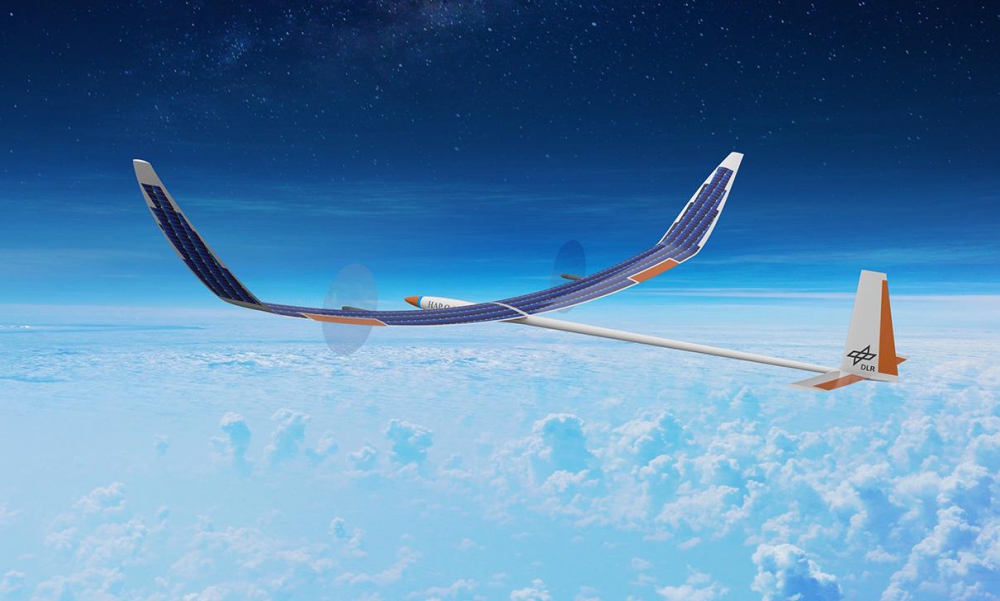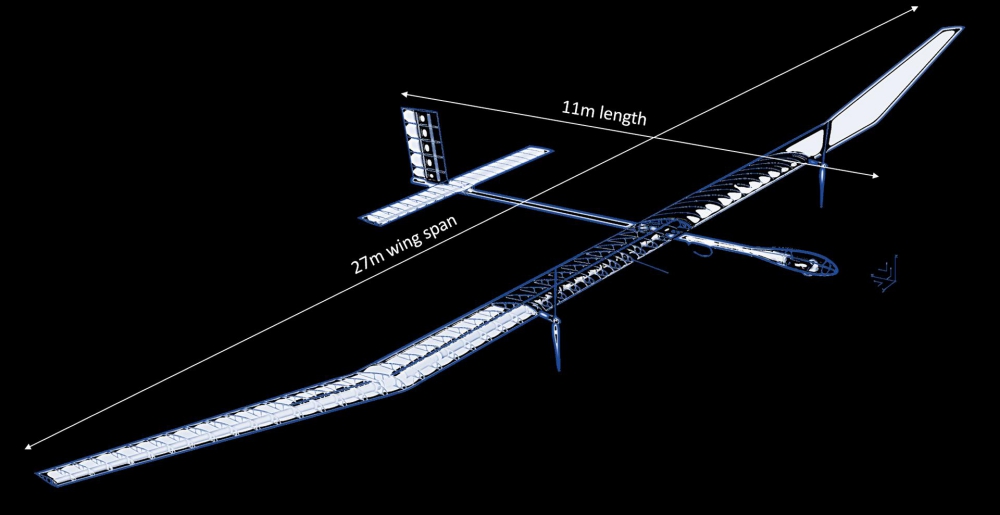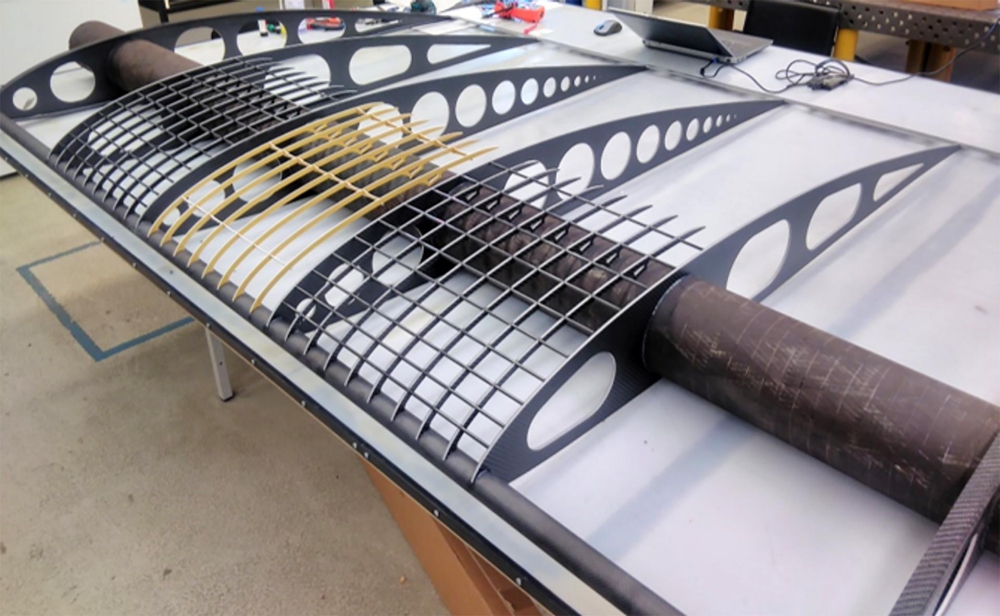A team from the German Aerospace Center (Deutsches Zentrums für Luft- und Raumfahrt; DLR) is researching and developing an unmanned, solar-powered stratospheric aircraft for future scientific experiments that combines the advantages of spaceflight and aeronautics.
DLR researchers have named their technology carrier HAP alpha. “HAP stands for ‘High-Altitude Platform’,” explains Florian Nikodem from the DLR Institute of Flight Systems. “They are usually solar-powered platforms that are permanently stationed in the lower stratosphere at an altitude of 20 kilometres.” At this altitude, they fly far above civilian air traffic and even above the weather. They can be deployed anywhere provided there is sufficient solar power and, depending on their payload, can be used for a wide variety of missions. They are independent of the weather once they have reached the lower stratosphere, and they are also independent of mission durations as there is no crew on board. This is what sets them apart from conventional aircraft.
HAP alpha is intended to fly to an altitude of 20 kilometres carrying a five-kilogram payload, but it cannot yet be stationed there for an extended period of time. The robust and modular design of the platform makes it easy to modify. With a wingspan of 27 metres, it is comparable to an aircraft capable of continuous flight but its structure weighs only 36 kilograms.
“We have been able to achieve the low weight for this size by using an extremely lightweight carbon-fibre-reinforced polymer (CFRP) design,” Nikodem explains. “The main spar, fuselage and tail spar of the structure are made of circular wound CFRP tubes. These are very light yet highly stable.”
17 DLR institutes are working towards the first flight
The solar-powered, unmanned demonstrator is not the only thing the team is developing in the project. A ground station, the operational procedures and three payloads to be carried by the platform are also part of the research. The mobile ground station will be used by the researchers coordinate the missions and data reception. It is being set up in transportable containers and should be able to exchange data with the HAP from a distance of over 100 kilometres. The three payloads, including the high-resolution Modular Aerial Camera System High-Altitude Platform (MACS-HAP) and the High-Altitude Platform Synthetic Aperture Radar (HAPSAR), offer a wide range of future applications. A total of 17 DLR institutes from the fields of aeronautics, space and security are working together on HAP alpha, with the project being led by the Institute of Flight Systems in Braunschweig.
In April 2019, the team demonstrated that the established system requirements and the developed aircraft form were suitable to achieve the project goals. At the following Preliminary Design Review, the researchers showed that the preliminary design of the platform fulfilled all system requirements within the cost and deadline specifications and that the risks relating to future changes were as low as possible. The result of the review forms the basis for the continued development of the project in the detailed design stage and confirms that the researchers selected the right design options, identified the necessary interfaces and planned the correct verification methods. The researchers are currently preparing the Critical Design Review, which will check whether the detailed design can achieve the project goals. After that, the production and assembly of the individual components will commence.
HAP takes flight
HAP alpha is scheduled to take off on its first test by the end of 2022. Initially, the aircraft will merely perform low-altitude flights over the site of the National Experimental Test Center for Unmanned Aircraft Systems in Cochstedt. The flight altitude will be a few hundred metres. After successful low-altitude tests, the flight altitude will then be gradually increased up to the target of 20 kilometres during further high-altitude flight campaigns.
“Unlike the first test flights in Cochstedt, where the test duration will only be a few hours, a high-altitude flight can take up to 24 hours due to HAP’s slow flight speed, even if the platform will only be at an altitude of 20 kilometres for about two hours,”
says Nikodem, explaining the challenge posed by future tests. In order to carry out these tests, the team has to have several crews available and train for their changeovers.
Payloads will also be used in future high-altitude flights. With every test, the team will gather experience and be able to modify the HAP to enable longer flights. After achieving the sufficient operational safety of the team and the platform at such a high altitude, the stratospheric aircraft could be used as an experimental carrier for payloads and new platform-specific technologies. One example would be using the HAP as a hub for digital communication to support the deployment of a 5G network.



